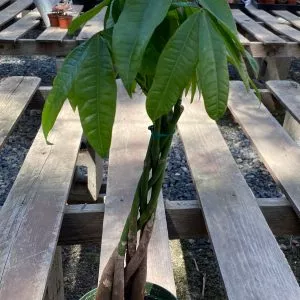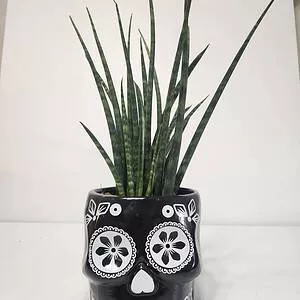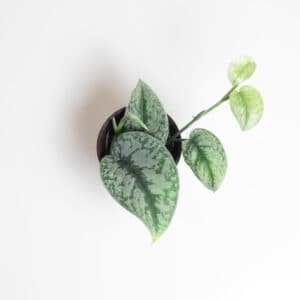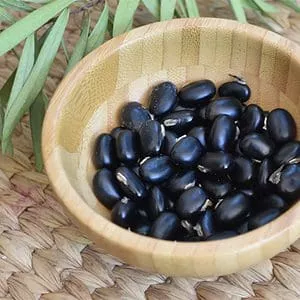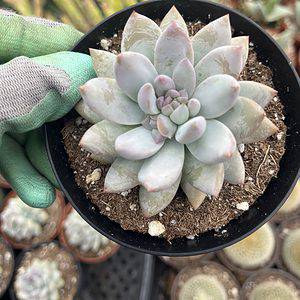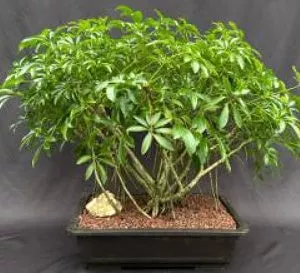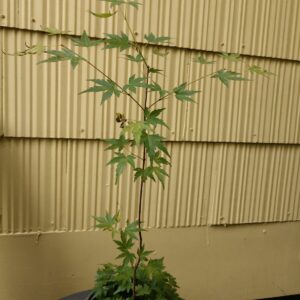No products in the cart.
Table of Contents
You most likely did come across this beautiful plant, aka Codiaeum variegatum, with brightly colored stripes on many occasions. It is a favorite choice for house and outdoor plants because they are lovely and do not require much maintenance.
Still, providing it with the best care is not as simple as many think. This is especially true for indoor care.
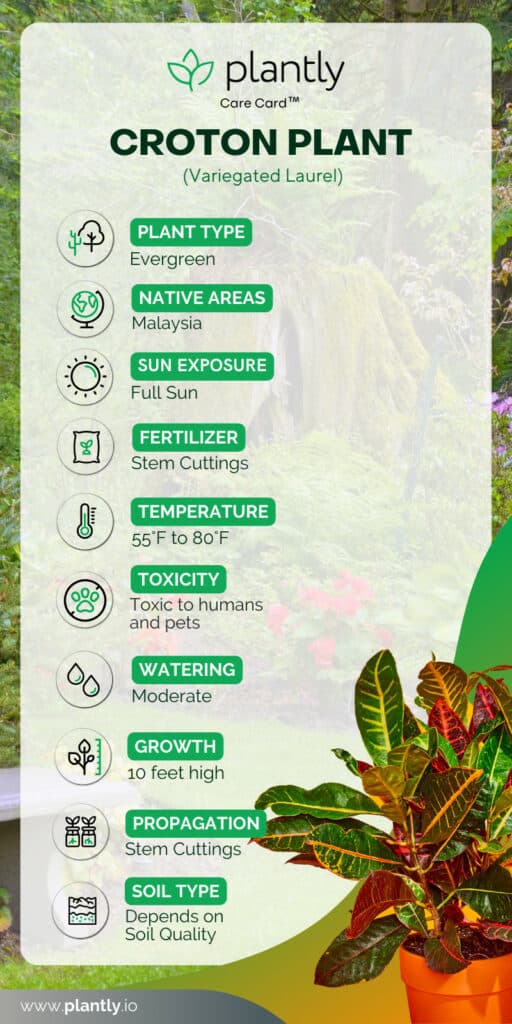
Caring for the Croton is Easy
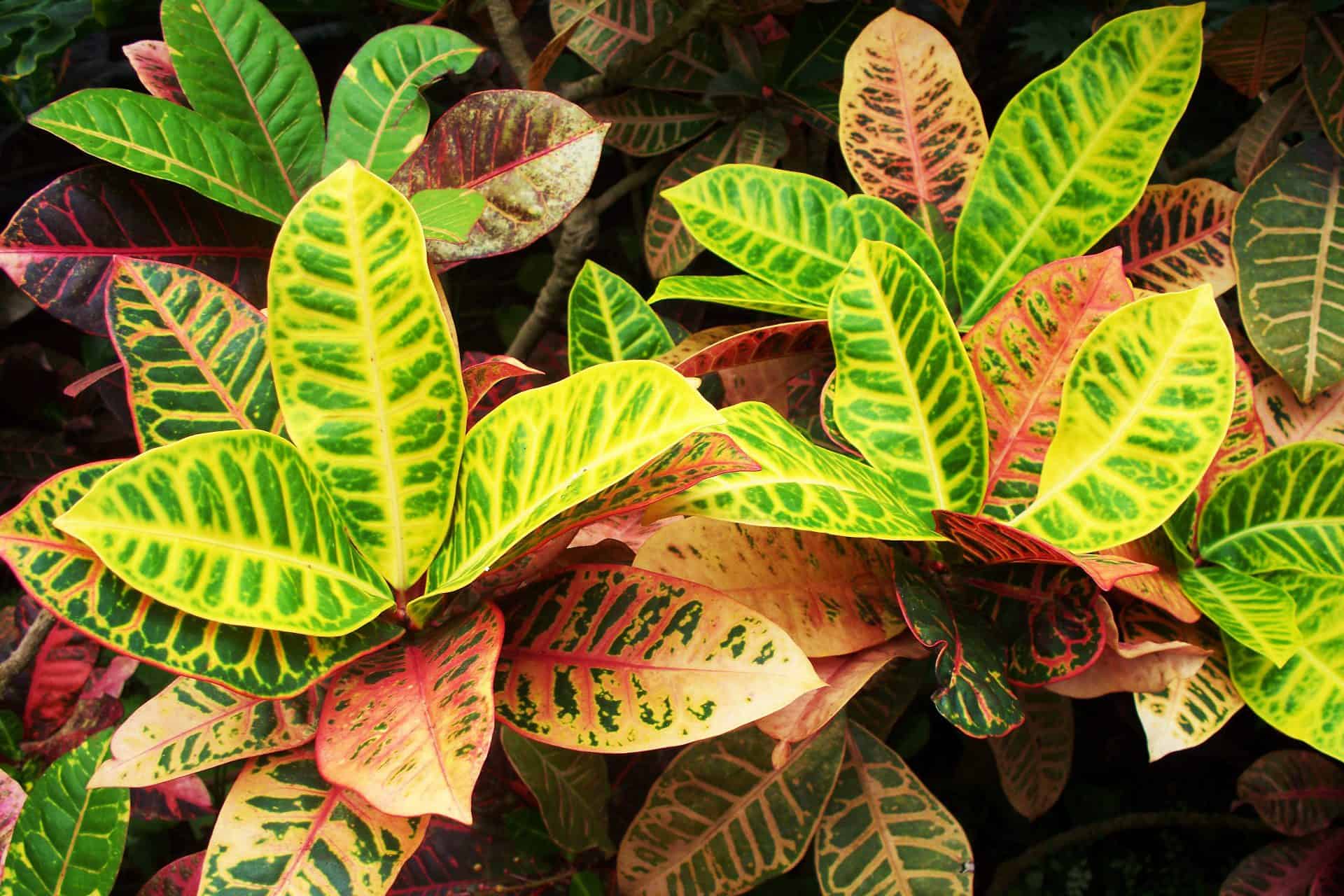
The difficulty associated with growing crotons is widespread, helping the plant produce its trademark leaves that come in all shapes and sizes bursting with color. Croton plants are usually outdoor, but they can also be indoor plants.
You provided them with enough light and adequate temperature and humidity needs.
In this article, you will learn everything there is to know about this tropical houseplant.
Soil
The perfect soil is slightly acidic (the best pH level is from 4.5 to 6) and rich in organic matter, but this is not mandatory. This combination is excellent for getting the best possible foliage out of your plants.
The only requirement is that the soil has good draining qualities and is not prone to sogging. If those conditions are met, your plants will quickly thrive.
Still, providing adequate aeration and excluding excessive drainage is worthwhile, as it can contribute to your plant drying out. If any of the above occur, you might need to mist or water it more often.
Humidity and temperature
One of the first issues that pop up whenever you talk with gardeners about croton care is: “It is a pain in the …neck… to provide the adequate temperature.”
The area that they reside in must be high in humidity. You risk losing your plant’s leaves if you don’t uphold the required moisture level.
A practical solution is to mist your plants, especially when they are not entirely mature. If you have big crotons and many of them, humidifiers are great for keeping the area humid. The ideal levels go from 40 to 80%.
As for the ideal temperature for croton plants- if you keep it above 55°F, your plant will grow quite nicely, bringing its sheer beauty into your home. It takes about a month to germinate.
-
$65.99Sold By: Succulent Oasis
In stock
Mature Bonsai Money Tree
Rated 4.84 out of 5 based on 352 customer ratings00Sold By: Succulent Oasis -
$25.00Sold By: Stripes and Variegations
In stock
Sansevieria Fernwood Mikado in Sugar Skull Pot – Mikado Snakeplant 6″
Only 1 available and it’s in 1 people’s basketSold By: Stripes and Variegations -
$6.00Sold By: Smoot's Farm
In stock
Curio Senecio rowleyanus String of Pearls Solid Green 2″ Pot Live
Only 10 available and it’s in 1 people’s basketRated 4.89 out of 5 based on 27 customer ratings00Sold By: Smoot's Farm -
$15.00Sold By: Gardengineering
$25.00In stock
Scindapsus Pictus Exotica | Philodendron Silver | Satin Pothos
Rated 4.96 out of 5 based on 25 customer ratings00Sold By: Gardengineering
Ideal Lighting
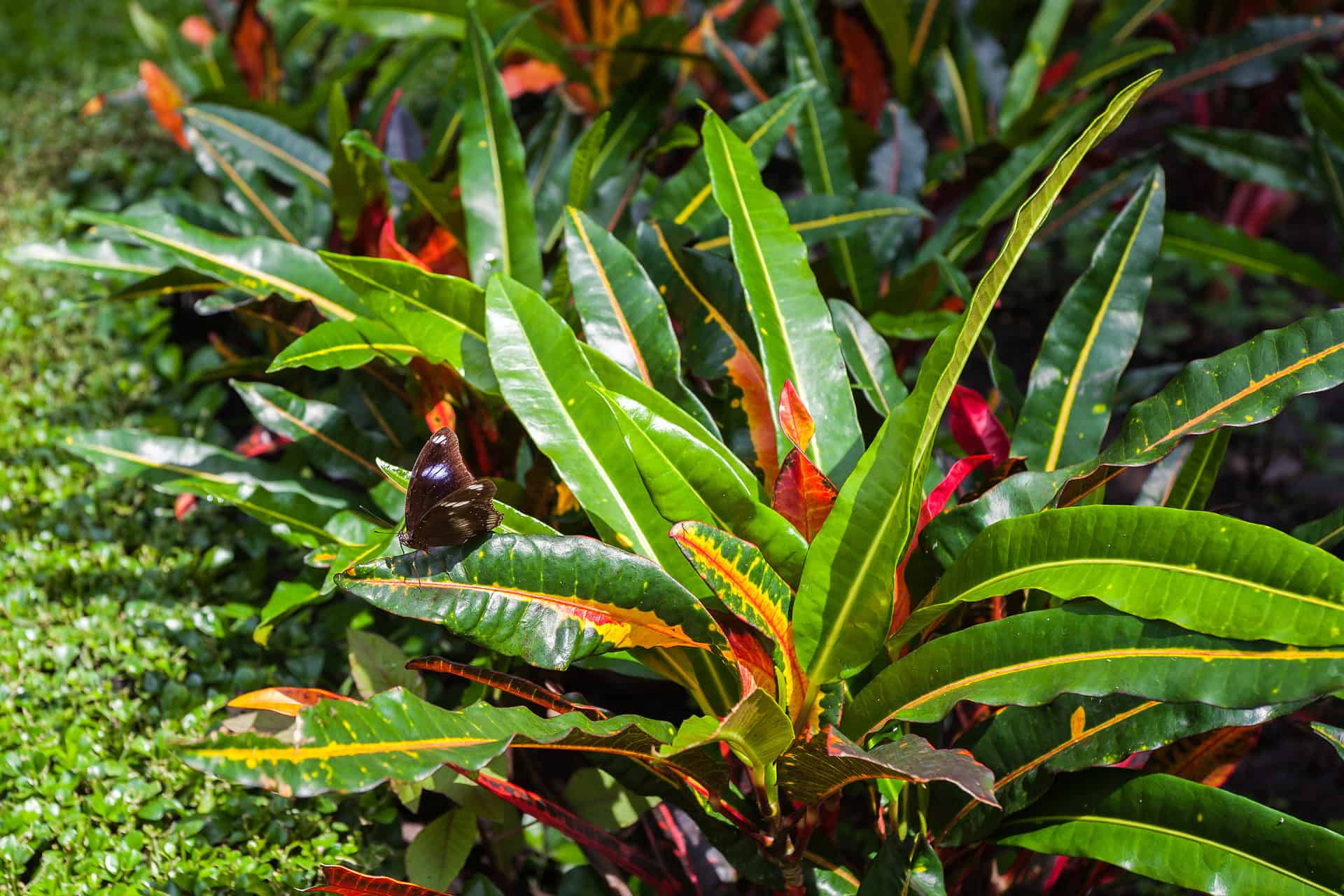
Croton petras are well-known for their richness of color and jaw-dropping foliage, but do you know the essential ingredient for achieving these kinds of results? – FULL SUN.
Their striking foliage can tolerate full sun due to its thick, leathery, glossy leaves. If exposed to direct sun exposure, water them daily to balance their needs.
If they don’t get the required sunlight, your plants will turn dark green and might even start falling off!
Please make no mistake: although crotons are sun-loving tropic beauties, they can be brought indoors with bright, indirect light, like near a window. If so, water daily is not recommended.
Watering
As I have said, these plants don’t require much attention. The basic rule that applies to most plants, watering them when the soil is dry, also applies to croton plants.
A surefire way to quickly check is to insert your finger in the soil, at least half an inch deep. If it is dry, you know your plant is thirsty.
When it is time to give your plant water, don’t hesitate to provide them with a lot of it. Also, during growth periods, mist your croton plant every two days in addition to regular watering periods, as they require more moisture and water.
If any of these two signs start appearing on your plant, you will know you have done something wrong:
- When the foliage begins drying out and dropping, it means you didn’t provide it with enough water
- If the leaves start to wilt, the plant is overwatered
Fertilizer
Like any other tropical houseplants, only feed or fertilizer once a month during the growing season ( spring and summer ). Do not fertilize crotons during fall and winter.
Fertilizer may be unnecessary if your potting mix adds organic or compost. These plants thrive best in a fertile, well-draining mix.
Potting and Re-potting
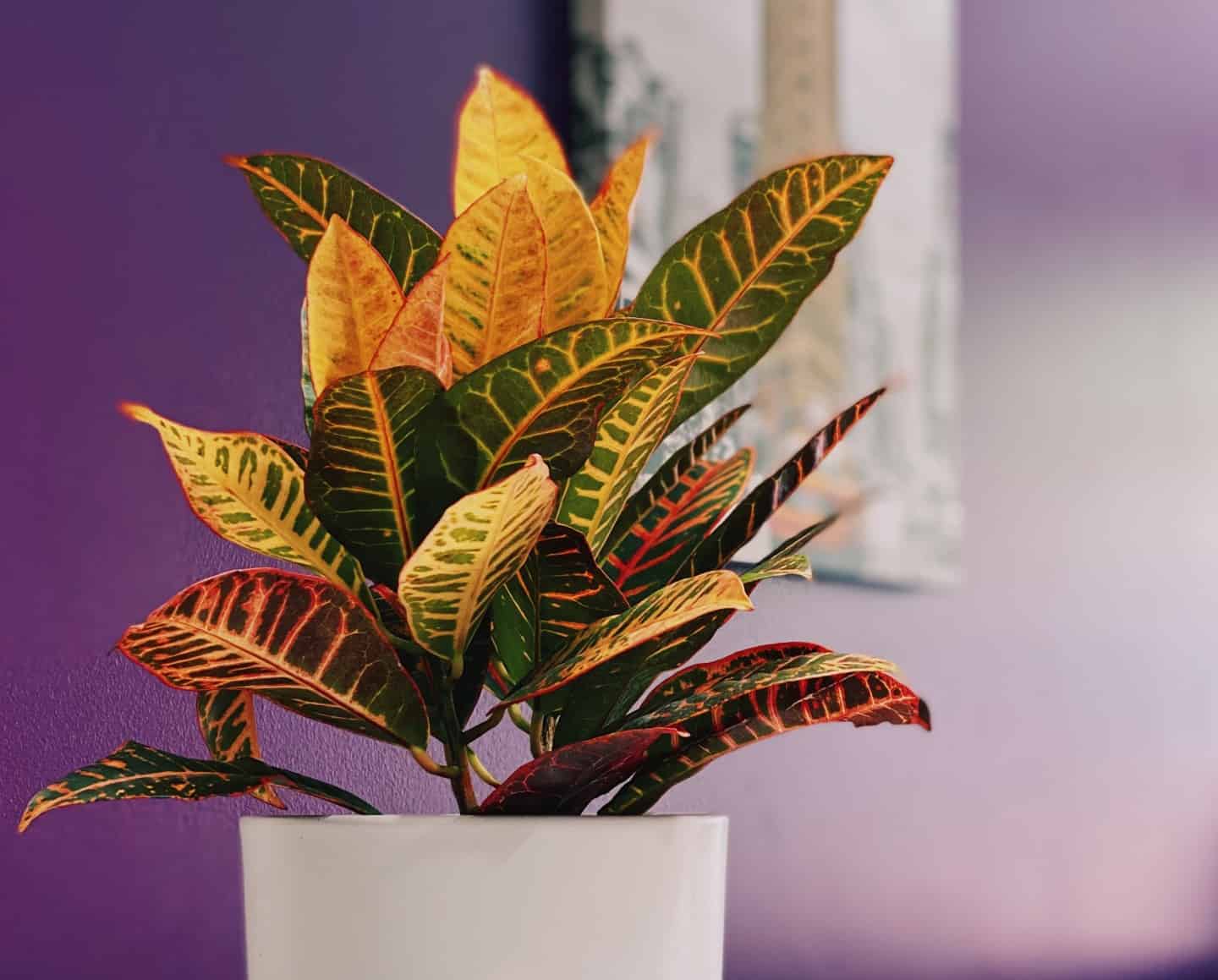
Measure the correct pot size by considering the plant’s root ball. After that, pick a larger container by one-third of that size.
Re-potting should be done during spring if the need arises. Increasing the container size to only one larger size will suffice for most Croton plants.
When settling your croton plants in new pots, always add more water to the new potting area. It is recommended to include more soil if there is room to fill 1 inch below your container’s rim.
Pruning
Pruning croton plants to preserve the plant’s health by removing dead leaves and branches.
Trimming above the node helps take care of overgrown branches and leaves to keep the plant’s shape to your liking. Before removing any unnecessarily large pieces of the plant, take heed not to take more than 1/3 of the stem height.
Croton Propagation
All of this sounded easy to follow so far, right? This part is no different, as propagating crotons is most commonly done through stem cuttings. Take 5 to 6-inch tip cuttings, all done below a growth node.
To dry, the cutting should then be placed in powdered lay or charcoal within a newspaper. Tie them up and put them in a plastic bag. Keep them warm and moist. Take care to use these cuttings within a month.
It would be best if you stuck with this method, as crotons don’t grow from seeds, and the offspring aren’t anything like the parent plant. Cuttings, on the other hand, produce identical offspring.
Croton’s often created shoots that can be used to develop new plants for propagation. Rooting hormones are handy for increasing the chances of success of this step.
-
$3.99Sold By: Cacti and Exotica
In stock
Haworthia Retusa | Star cactus | 2″ Pot
Only 8 available and it’s in 2 people’s basketRated 4.98 out of 5 based on 59 customer ratings00Sold By: Cacti and Exotica -
$10.00Sold By: Smoot's Farm
In stock
Hemstitched Iris
Rated 4.89 out of 5 based on 27 customer ratings00Sold By: Smoot's Farm -
Free Shipping$8.95Sold By: SunSoul Plants
$10.95In stock
Black Mucuna Pruriens 15+ Seeds, Organic, free shipping
Rated 4.87 out of 5 based on 98 customer ratings00Sold By: SunSoul Plants -
Free Shipping$8.59Sold By: CZ Grain
In stock
10 Dwarf Cherry Bonsai Tree Seeds for Planting
Rated 4.60 out of 5 based on 156 customer ratings01Sold By: CZ Grain
Croton Growth Zones
The recently updated ( November 2023 ) USDA plant hardiness zone map guides where crotons, as tropical plants, can thrive outdoors. Crotons grow year-round outside in Zone 10 areas like southern Florida and California.
Zones 9-11 across southern coastal and desert regions suit outdoor croton cultivation in summer when temperatures are warmest.
The southern half of the U.S. in Zones 8-11 allows seasonal outdoor croton planting. For most of the U.S. in Zones 4-7, crotons should be kept indoors as houseplants and temporarily placed outside in summer.
With ideal temperatures between 70-90°F, most of the continental U.S. provides suitable indoor conditions for growing vibrant crotons inside the home.
Recommended Varieties
- Petra – Features colorful yellow, orange, red, and pink foliage with exciting leaf shapes. Does well in bright light.
- Mammy – Has thick oval leaves with yellow, green, and pink variegation. More tolerant of lower light.
- Gold Dust – Displays striking yellow and green leaf patterns. Requires bright light to maintain color.
- Banana – Produces vibrant yellow and green leaves resembling banana fruits. Thrives in humid conditions.
- Clara – Has narrow, rippled leaves with yellow, pink, and bronze hues. Does well in partial shade.
- Auriferus – Flaunts large golden-yellow leaves that provide a dramatic effect. Needs some direct sun.
- Cardinal – Bears elegant, slender leaves with crimson red color. Grows well in containers.
- Curly Corkscrew – Has twisted, curled green and yellow leaves on corkscrew stems. Adds unique texture.
- Eleanor Roosevelt – Features broad leaves with pink, yellow, orange, and crimson tones. Bring vivid color indoors.
- Gold Star – Has bright golden star-shaped leaves with dark green edges. Adds bold texture.
Crotons offer magnificent foliage colors and patterns. Choose varieties based on your light and space.
Pests and Troubleshooting
Sadly, these beauties are often the target of a relatively large number of pests. These include the following:
- Red Spider Mites
- Plant Scale
- Mealybugs
- Thrips
The best way to deal with these intruders is to utilize insecticidal soap and neem oil and keep the plants as dustless as possible.
Often, checking up on your plants is an excellent preventive measure, as these issues can be avoided by taking action early on before an infestation can get out of hand.
If all else fails, neem-based insecticides such as AzaMax will make short work of these pests.
Whether you want to buy, sell or simply reach out to other plant enthusiasts, Plantly is the right place to be!
-
$12.99Sold By: Succulent Oasis
In stock
Medium Succulent Plant – Hen’s and Chicks Sempervivum Pacific Blue Ice
Only 3 available and it’s in 1 people’s basketRated 4.84 out of 5 based on 352 customer ratings01Sold By: Succulent Oasis -
$9.99Sold By: Cacti and Exotica
In stock
Cactiandexotica | Sedeveria Lilac Mist | 4″ Pot
Rated 4.98 out of 5 based on 59 customer ratings00Sold By: Cacti and Exotica -
Free Shipping$760.45Sold By: BONSAI WORLD LLC
Only 1 left in stock
Hawaiian Umbrella Bonsai Tree Banyan Style (arboricola schfflera)
Sold By: BONSAI WORLD LLC -
